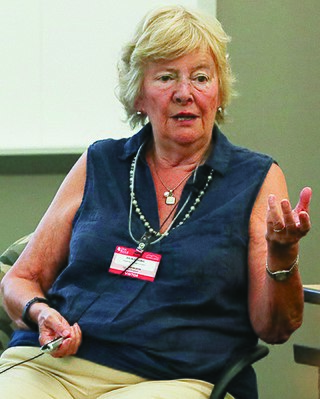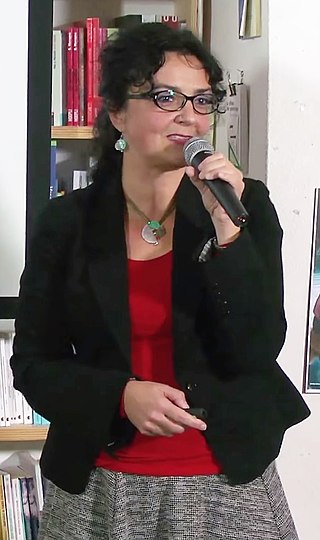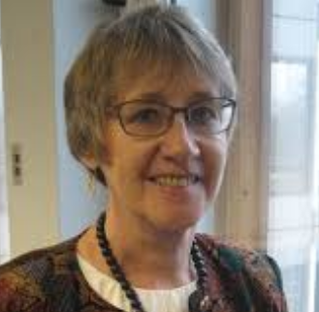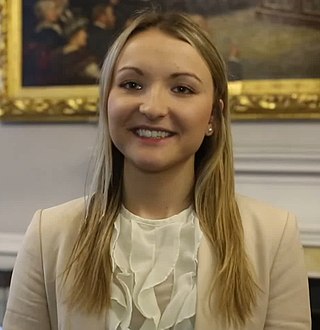Related Research Articles

Crystallography is the experimental science of determining the arrangement of atoms in crystalline solids. Crystallography is a fundamental subject in the fields of materials science and solid-state physics. The word crystallography is derived from the Ancient Greek word κρύσταλλος, with its meaning extending to all solids with some degree of transparency, and γράφειν. In July 2012, the United Nations recognised the importance of the science of crystallography by proclaiming that 2014 would be the International Year of Crystallography.

Nuclear physics is the field of physics that studies atomic nuclei and their constituents and interactions, in addition to the study of other forms of nuclear matter.

X-ray crystallography is the experimental science determining the atomic and molecular structure of a crystal, in which the crystalline structure causes a beam of incident X-rays to diffract into many specific directions. By measuring the angles and intensities of these diffracted beams, a crystallographer can produce a three-dimensional picture of the density of electrons within the crystal. From this electron density, the mean positions of the atoms in the crystal can be determined, as well as their chemical bonds, their crystallographic disorder, and various other information.

Neutron diffraction or elastic neutron scattering is the application of neutron scattering to the determination of the atomic and/or magnetic structure of a material. A sample to be examined is placed in a beam of thermal or cold neutrons to obtain a diffraction pattern that provides information of the structure of the material. The technique is similar to X-ray diffraction but due to their different scattering properties, neutrons and X-rays provide complementary information: X-Rays are suited for superficial analysis, strong x-rays from synchrotron radiation are suited for shallow depths or thin specimens, while neutrons having high penetration depth are suited for bulk samples.

The Open-pool Australian lightwater reactor (OPAL) is a 20 megawatt (MW) swimming pool nuclear research reactor. Officially opened in April 2007, it replaced the High Flux Australian Reactor as Australia's only nuclear reactor, and is located at the Australian Nuclear Science and Technology Organisation (ANSTO) Research Establishment in Lucas Heights, New South Wales, a suburb of Sydney. Both OPAL and its predecessor have been commonly known simply as the Lucas Heights reactor.

Dame Julia Stretton Higgins is a British polymer scientist. Since 1976 she has been based at the Department of Chemical Engineering at Imperial College London, where she is emeritus professor and senior research investigator.
The Australian Nuclear Science & Technology Organisation (ANSTO) is Australia's national nuclear organisation and the centre of Australian nuclear expertise. It is a statutory body of the Australian government formed in 1987 to replace the Australian Atomic Energy Commission.
Hugo M. Rietveld was a Dutch crystallographer who is famous for his publication on the full profile refinement method in powder diffraction, which became later known as the Rietveld refinement method. The method is used for the characterisation of crystalline materials from X-ray powder diffraction data. The Rietveld refinement uses a least squares approach to refine a theoretical line profile until it matches the measured profile. The introduction of this technique which used the full profile instead of individual reflections was a significant step forward in the diffraction analysis of powder samples.
Australian Nuclear Science and Technology Organisation's Australian Synchrotron is a 3 GeV national synchrotron radiation facility located in Clayton, in the south-eastern suburbs of Melbourne, Victoria, which opened in 2007.

In physics, the atomic form factor, or atomic scattering factor, is a measure of the scattering amplitude of a wave by an isolated atom. The atomic form factor depends on the type of scattering, which in turn depends on the nature of the incident radiation, typically X-ray, electron or neutron. The common feature of all form factors is that they involve a Fourier transform of a spatial density distribution of the scattering object from real space to momentum space. For an object with spatial density distribution, , the form factor, , is defined as
Jump diffusion is a stochastic process that involves jumps and diffusion. It has important applications in magnetic reconnection, coronal mass ejections, condensed matter physics, option pricing, and pattern theory and computational vision.
The Australian Centre for Neutron Scattering (ACNS), formerly the Bragg Institute, is a landmark neutron and X-ray scattering facility in Australia. It is located at the Australian Nuclear Science and Technology Organisation's (ANSTO) Lucas Heights site, 40 km south-west of Sydney, in New South Wales, Australia.

John M. "Jack" Carpenter was an American nuclear engineer known as the originator of the technique for utilizing accelerator-induced intense pulses of neutrons for research and developing the first spallation slow neutron source based on a proton synchrotron, the Intense Pulsed Neutron Source (IPNS). He died on 10 March 2020.

Jill Trewhella FAAAS FLANL Dist FRSN is a biophysicist who has worked in both Australia and the United States.

Elspeth Frances Garman is professor of molecular biophysics at the University of Oxford and a former President of the British Crystallographic Association. She is also Senior Kurti Research Fellow at Brasenose College, Oxford. The "Garman limit", which is the radiation dose limit of a cryocooled protein crystal, is named after her.

Cătălina Oana Curceanu is a Romanian physicist and lead researcher at the Istituto Nazionale di Fisica Nucleare. She researches low energy quantum chromodynamics.

Ursula "Uschi" Steigenberger FInstP was a German condensed matter physicist and director of the ISIS neutron source. She was one of the founders of the Institute of Physics Juno Award.

Ceri Brenner is a plasma physicist at the Science and Technology Facilities Council.
Vanessa K. Peterson is a Neutron Instrument Scientist, at the Australian Nuclear Science and Technology Organisation (ANSTO). She established an independent research program at ANSTO which specialised on improving understanding of energy systems and how they work. She manages the Echidna program, a high-resolution powder diffractometer, as well as Wombat - a high-intensity powder diffractometer. Peterson's expertise includes synchtron and laboratory x-ray techniques, as well as neutron powder diffraction, as well as single crystal x-ray diffraction.
Anna Paradowska is an Australian engineer who is Professor in Advanced Structure Materials at the Australian Centre for Neutron Scattering and the Australian Nuclear Science and Technology Organisation.
References
- 1 2 "Dr Helen Maynard-Casely". www.ansto.gov.au. Retrieved 2022-10-21.
- ↑ "May 2010 - PANalytical Thesis Prize for Dr. Helen Maynard-Casely | CSEC". www.csec.ed.ac.uk. Retrieved 2022-10-21.
- ↑ Maynard-Casely, Helen E. (2009). "New mineralogy of the outer solar system and the high-pressure behaviour of methane". Bibcode:2009PhDT.......375M.
{{cite journal}}: Cite journal requires|journal=(help) - 1 2 3 "Helen Maynard-Casely". The Conversation. 14 October 2011. Retrieved 2022-10-21.
- 1 2 "Helen Maynard-Casely". nmi3.eu. Retrieved 2022-10-21.
- ↑ "AMplify episode 27: Live at the AM with Dr Helen Maynard-Casely". The Australian Museum. Retrieved 2022-10-21.
- ↑ "Making alien worlds on Earth". cosmosmagazine.com. 2017-07-27. Retrieved 2022-10-21.
- ↑ Tatton, Fiona (2017-02-22). "Scientific careers are about the possibilities and we can't allow outdated ideas about women's role in society to slip back into being the norm - Dr. Helen Maynard-Casely, Instrument Scientist at the Australian Centre for Neutron Scattering - Womanthology". Womanthology: Homepage. Retrieved 2022-10-21.
- ↑ "Crystallography Reviews". Taylor & Francis. Retrieved 2022-10-24.
- ↑ Finkel, Elizabeth (2012). The best Australian science writing 2012 (International ed.). Sydney: NewSouth Pub. ISBN 978-1-74224-129-6. OCLC 828150510.
- ↑ Ferrie, Chris; Maynard-Casely, Helen; Doyle, Elizabeth (2020). I [heart] Pluto. Naperville. ISBN 978-1-7282-0524-3. OCLC 1129395186.
{{cite book}}: CS1 maint: location missing publisher (link) - ↑ "The Australian Institute of Physics - Women in Physics Lecturer". aip.org.au. Retrieved 2022-10-21.
- ↑ "Australian Nuclear Science and Technology Organisation Annual Report 2018–19: Dr Helen Maynard-Casely". Australian Government Transparence Portal. Retrieved 2022-10-23.
- ↑ "Longest glow stick necklace". Guinness World Records. Retrieved 2022-10-21.
- ↑ "Prizes - PCGSCMP". www.pcg-scmp.org. Retrieved 2022-10-21.